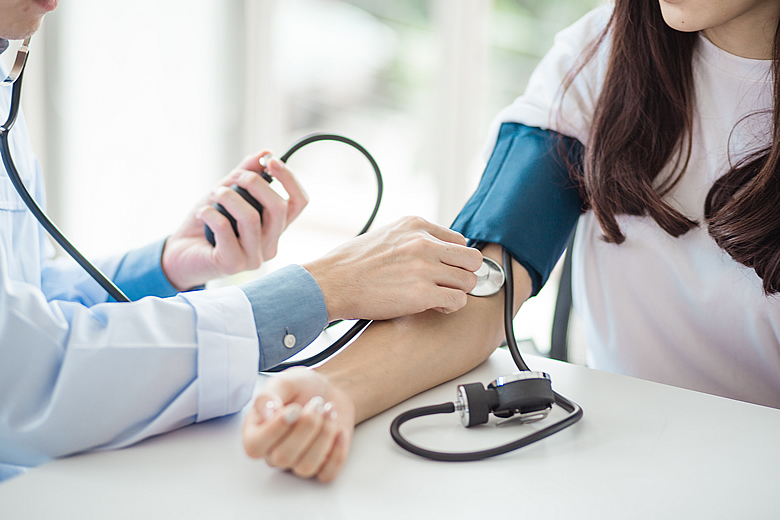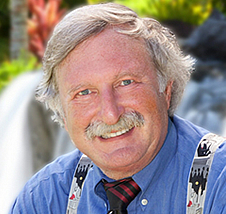Don't Fear POTS: Tips for Diagnosis and Treatment

The following article is reprinted from Medscape.com (see original article at Medscape).
COMMENTARY
Pam R. Taub, MD; Michelle L. O'Donoghue, MD, MPH
See disclosures at bottom of page | October 09, 2023
This transcript has been edited for clarity.
Michelle L. O'Donoghue, MD, MPH: Hi. This is Dr Michelle O'Donoghue, reporting for Medscape. I'm here in Amsterdam at the European Society of Cardiology (ESC) Congress 2023. Joining me for a great discussion is my friend Dr Pam Taub, who is a cardiologist and a professor of medicine at UC San Diego. She has a particular interest in postural orthostatic tachycardia syndrome (POTS), so that's what we'll be talking about today.
Thanks for joining me, Pam. When we think about POTS, for those who are not familiar with the term, what does it actually mean and how do you diagnose it?
No Tilt Table Required
Pam R. Taub, MD: As you said, it's postural orthostatic tachycardia syndrome. What that means is when somebody stands up, they have an elevation in their heart rate that is usually 30 points from when they're lying down. That's typically associated with symptoms such as lightheadedness, dizziness, and cognitive difficulties such as brain fog. The diagnosis can be made by tilt-table testing, but it can also be made in the office with simple orthostats.
In my clinic, I have people lie down for 3-5 minutes. At the end of that period, you get a heart rate and blood pressure. Then you have them stand up for 3-5 minutes and then get heart rate and blood pressure, and you look at the differences. If the heart rate goes up by 30 points — so maybe they're 80 beats/min when they're lying down and when they stand up, it goes to 110 beats/min — that's POTS, so very objective criteria. Typically, these people don't have what we call orthostatic hypotension, where there is a significant decrease in the blood pressure. It's more a heart rate issue.
O'Donoghue: How symptomatically do they usually present?
Taub: It's a spectrum. Some people have mild symptoms. After they're in the upright position for maybe 10 minutes, they get symptoms. There are some people who, when they go from a lying to standing position, they're extremely symptomatic and can't really do any activities. There are some people that are even wheelchair-bound because the symptoms are so debilitating. There's a wide spectrum.
O'Donoghue: There has been more discussion, I feel like, about the rising prevalence of POTS as a diagnosis, and in particular since the COVID pandemic. What's our understanding of the relationship between COVID and POTS and what the mechanism might be?
Taub: We've known that POTS can be triggered by a viral infection. Before COVID, we knew that in certain individuals that we think have an underlying genetic predisposition, usually some autoimmune substrate, when they get certain types of infections, whether it's influenza or mononucleosis, they get POTS.
Typically, when they get an infection, they start getting deconditioned. They don't feel well, so they're on bedrest. When they get long periods of bed rest, when they start to become active, they start to have overactivation of their sympathetic nervous system and they have a large amount of cardiovascular deconditioning. It's a cycle that is often triggered after an infection.
A huge increase of POTS has been seen after COVID-19 because we had so many people exposed to this virus. With COVID-19, there is a period where people don't feel great and they are getting bedrest, so they're getting deconditioned. We've seen so many patients referred for post-COVID POTS and also long COVID or the post-acute sequelae of COVID-19, where POTS is a part of that presentation.
Female Sex and Autoimmune Conditions
O'Donoghue: We know that POTS seems to disproportionately affect women. Is that understood? Is it thought that that's related to the perhaps the autoimmune component of that illness?
Taub: Yes. The theory is because women tend to have more autoimmune conditions, that's why they're more predisposed. There's a large amount of genetic susceptibility. For instance, we know that there's an association between POTS and conditions like Ehlers-Danlos syndrome and between POTS and mast cell activation. Some of those conditions are more prevalent in women as well.
O'Donoghue: I feel like many physicians don't know how to manage POTS, and they're actually a little fearful perhaps to take it on. Fortunately, there have been a growing number of POTS clinics with specialists that focus on that area. For the average practitioner who maybe can't refer to a POTS clinic, how should they approach that?
Taub: The first thing is its diagnosis. When someone tells you that they have symptoms of orthostatic intolerance — so, activities that involve standing — you need to first have that on your differential diagnosis. You can make the diagnosis in the office with orthostats. You don't need a tilt table. It's sometimes helpful if you're unsure about the diagnosis, but you can make the diagnosis.
Many times, you're finding people that have very mild symptoms. You can treat that with some good lifestyle recommendations, such as increased hydration, increasing salt in their diet, and compression. And the exercise component is really important.
Many people with POTS are told to go exercise, go for a run, or go for a walk. That's incorrect, because these people have symptoms when they're in the upright position. The type of exercise they need to do initially is exercise in the lying or seated position — so exercises like rowing or a seated bike, and strength training. As they start to feel better, then they can do upright exercise.
You should never tell a person that has POTS to just initially start with upright exercise, because they're going to feel so much worse and then they're never going to want to exercise. It's really important to give them the right exercise recommendations. I find that for many of these mild cases, if they do the right exercise and engage in the right lifestyle strategies, they get better.
Compression Wear and Drug Therapy
O'Donoghue: When it comes to compression stockings, do you usually start with a particular length?
Taub: It's interesting. There are many different compression stockings, medical grade. Through patients with POTS, I've gotten feedback on certain types of athletic wear that have built-in compression, and that's a little bit easier for people to wear every day because they can do their errands and it doesn't look like they're wearing medical-grade compression stockings.
Basically, I've collected all the different recommendations that patients say help, and I give them a list. The medical-grade compression stockings sometimes are very challenging to put on and sometimes people just need light compression or even just socks. Any kind of compression is going to help.
O'Donoghue: That's a great tip, because I know there are many patients who refuse to wear the compression stockings. If there's a fashionable alternative, that's always good to reach for.
Taub: Another thing that patients have told me is that abdominal compression is also very helpful. There are many commercially available abdominal compression options, like shapewear. Many patients with POTS use that and that helps, too.
O'Donoghue: Good. For those patients with POTS that is refractory to the measures you've already discussed, what are the next steps after that?
Taub: Pharmacotherapy is very synergistic with lifestyle, and there are many different pharmacotherapy options. One of the first things that you want to think about is lowering that heart rate. The reason people feel horrible is because their heart rate is usually very high when they're upright. If they're upright for long periods of time and they're having very high heart rates, they're going to get really tired because it's like they're exercising for hours when they're upright.
Heart rate lowering is the cornerstone of therapy. Traditionally, we've used beta-blockers for heart rate lowering. The problem is they also lower blood pressure. They can also cause fatigue, so not the ideal agent for patients with POTS.
One of the clinical trials that I led was with a drug called ivabradine, which selectively works on the SA node and decreases heart rate without affecting blood pressure. What's really elegant about ivabradine is it has a more potent effect when the heart rate is higher. When the patient is standing, it's going to have a more potent effect on heart rate lowering. It's really well tolerated in patients with POTS. In our study, we showed an improvement in quality-of-life metrics. That's one of the first-line drugs that I use for patients with POTS.
The other thing is some of them will also have a concomitant lowering of blood pressure. You can think about medications that increase blood pressure, like midodrine, fludrocortisone, and droxidopa. Sometimes that combination of a heart rate–lowering medication and a medication that increases blood pressure really works well.
O'Donoghue: That's very helpful. I think that those kinds of practical tips are the ones that practitioners really want to reach for, because they need to have that algorithm in their mind to take on this condition. Thanks again for walking us through that.
I think it's a very interesting space, and there's more that we're going to be learning over the next few years as we further flesh out these post-COVID cases and what we learn from that as well.
Taub: There are many clinical trials now starting in POTS, so it's exciting.
O'Donoghue: Absolutely. Thank you again for joining me today. Signing off for Medscape, this is Dr Michelle O'Donoghue.
Michelle O'Donoghue is a cardiologist at Brigham and Women's Hospital and senior investigator with the TIMI Study Group. A strong believer in evidence-based medicine, she relishes discussions about the published literature. A native Canadian, Michelle loves spending time outdoors with her family but admits with shame that she's never strapped on hockey skates.
Follow Michelle O'Donoghue, MD on X (formerly known as Twitter).
Follow theheart.org | Medscape Cardiology on X (formerly Twitter)
Follow Medscape on Facebook, X (formerly known as Twitter), Instagram, and YouTube
Authors and Disclosures
Pam R. Taub, MD
Professor of Medicine, University of California San Diego Health, La Jolla, California
Disclosure: Pam R. Taub, MD, has disclosed the following relevant financial relationships: Serve(d) as a director, officer, partner, employee, advisor, consultant, or trustee for: Amgen; Bayer; Novartis; Novo Nordisk; Boehringer Ingelheim; Medtronic; Sanofi; Merck
Received income in an amount equal to or greater than $250 from: Amgen; Bayer; Novartis; Novo Nordisk; Boehringer Ingelheim; Medtronic; Sanofi; Merck
Michelle L. O'Donoghue, MD, MPH
Senior Investigator, TIMI Study Group; Associate Professor of Medicine, Harvard Medical School; Associate Physician, Brigham and Women's Hospital, Boston, Massachusetts
Disclosure: Michelle L. O'Donoghue, MD, MPH, has disclosed the following relevant financial relationships: Serve(d) as a consultant for: Janssen; Novartis; CVS Minute Clinic
Received research grant from: Merck & Co., Inc.; GlaxoSmithKline; Eisai Inc.; AstraZeneca Pharmaceuticals LP; Janssen Pharmaceuticals; The Medicines Company; Amgen
The opinions expressed in this article are solely my own and do not necessarily reflect the views and opinions of Brigham and Women's Hospital.
© 2023 WebMD, LLC
Any views expressed above are the author's own and do not necessarily reflect the views of WebMD or Medscape.
Cite this: Don't Fear POTS: Tips for Diagnosis and Treatment - Medscape - Oct 09, 2023.

Jacob Teitelbaum, M.D. is one of the world's leading integrative medical authorities on fibromyalgia and chronic fatigue. He is the lead author of eight research studies on their effective treatments, and has published numerous health & wellness books, including the bestseller on fibromyalgia From Fatigued to Fantastic! and The Fatigue and Fibromyalgia Solution. His newest book (June 10, 2024) is You Can Heal From Long COVID. Dr. Teitelbaum is one of the most frequently quoted fibromyalgia experts in the world and appears often as a guest on news and talk shows nationwide including Good Morning America, The Dr. Oz Show, Oprah & Friends, CNN, and Fox News Health.
